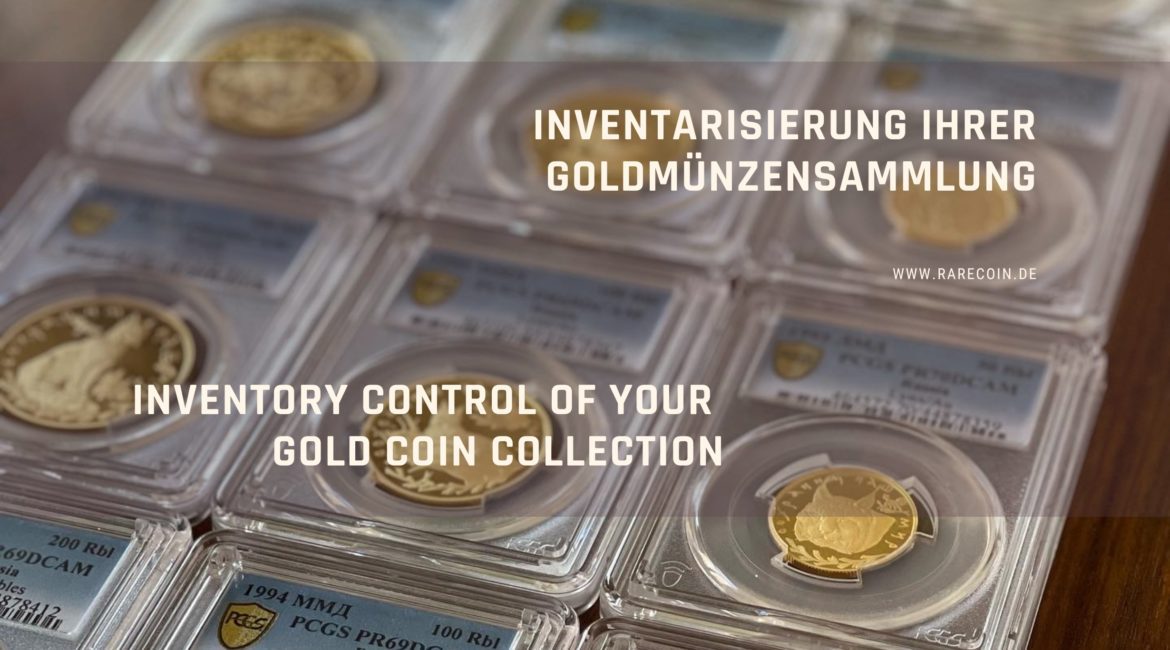Inventory is an important aspect of managing your gold coin collection. This involves recording the number of coins in your possession, their condition, grading and value. Good inventory control can help you organize your collection and make informed decisions about buying, selling or trading coins. Below are some steps you can follow to perform effective inventory control for your gold coin collection:
Count your coins:
The first step in inventorying is to count the number of coins in your collection. You can use a simple spreadsheet or notebook to create an inventory list that includes the name, grade, and value of each coin.
Classify your coins:
Classifying your gold coin collection is an important step in organizing and managing the collection. Coins are categorized according to various criteria such as face value, age, country of origin, rarity or condition.
First, determine the classification criteria that are most important to your collection, based on your individual needs. For example, if you collect gold coins from different countries, you can classify them according to their country of origin. Or if you collect coins from a certain era, you can classify them by age.
Next, sort your coins into groups based on the classification criteria you chose. You can use tables, dividers or albums to organize the coins. If you have a large collection, it may be helpful to create subcategories or subgroups within each classification, such as by embossing, design variant, or other criteria.
Label each category or group to make it easier to identify and find again. You can use labels or tags to identify each container or section.
Consider adding a cataloging system to your collection, more on this below in the section: Storage System. This could include a detailed inventory of each coin, including date, denomination, country, condition, and other relevant information. This information can be entered into a spreadsheet or database to help you keep track of your collection and its value.
It is important to regularly review and update your classification system as your collection grows and changes. You may find that some coins no longer fit into their original category and need to be reclassified. You may also discover new coins that require the creation of new categories or subcategories.
Overall, classifying your gold coin collection is a valuable step in organizing and managing your collection. It helps you easily find and access individual coins and provides a system for tracking and maintaining the collection.
Set up a storage system:
Organizing a storage system for a gold coin collection is critical to ensure the safety and preservation of the coins. The first step is to select a suitable container that provides adequate protection from dust, moisture and physical damage. Air and water tight containers such as coin capsules, tubes or plastic zipper lock bags are a good choice.
Arrange the coins systematically according to their face value, age or rarity. Use dividers or trays to keep coins separated and prevent them from scratching or rubbing against each other. Label the compartments or bins for easy identification and retrieval.
Make sure the storage area is clean and free from potential hazards such as direct sunlight, extreme temperatures or chemicals. Store the container in a dry and safe place, preferably in a fireproof safe or vault.
Regular maintenance and periodic inspections of the storage system are also necessary to ensure that the coins are in good condition and that the storage system remains suitable for collection. With a proper storage system, you can enjoy and maintain your gold coin collection for many years.
Maintain condition:
Inspect and care for your coins regularly. Look for signs of wear or damage. Grading companies such as PCGS and NGC offer cleaning services. It is not recommended to clean your really valuable gold coins yourself, as you can easily cause damage in the form of scratches or fingerprints.
Keep records:
Record any changes in your inventory list as soon as possible. Note all coins bought, sold, or traded, as well as any changes in condition or value. Update your inventory list regularly to ensure it is accurate and current.
Check your collection regularly:
Set a regular schedule to review your collection and make adjustments as necessary. Evaluate the value of each coin and decide which coins you want to keep or sell. This way you can keep your collection up to date and avoid surprises.
Obtain professional estimates:
If you have a gold coin collection and want to know its true value, it is a wise decision to have a professional appraisal done. A professional appraisal can tell you the exact value of your collection based on current market trends and the condition of your coins.
Below are some steps to follow when getting a professional appraisal done for your gold coin collection:
Research appraisers/specialist dealers: start by looking for appraisers in your area who specialize in gold coin collections.
Once you find an appraiser, make an appointment to have your gold coins appraised. During the appraisal, the appraiser will examine each coin to determine its condition, rarity, and historical significance.
Prepare: Before the appraisal, make sure you have all the necessary documentation for your gold coins, such as Certificates of Authenticity (COA = Certificates of Authenticity), receipts, and other relevant paperwork. This will help the appraiser make an accurate estimate. It may be helpful to jot down some important questions before the appointment.
Ask questions: during the appraisal, ask the appraiser questions about the value of your coins, current market trends, and other factors that might affect the value of your collection. A good appraiser should be able to explain the appraisal process in detail and answer any questions you may have.
Receiving the appraisal: Upon completion of the appraisal, you may receive a written report from the appraiser listing the value of each coin in your collection. You can use this report for insurance purposes or in case you want to sell your coins.
In summary, inventorying your coin collection is an essential part of managing your gold coin collection. By counting your coins, classifying them, setting up a storage system, monitoring their condition, keeping records, regularly reviewing your collection, and obtaining professional appraisals, you can ensure that your collection is organized, safe, and up to date. This way you can make informed decisions about buying, selling or trading coins and keep your valuable investment in very good condition.
Discover the new additions to our gold coin collection in the current range!
-
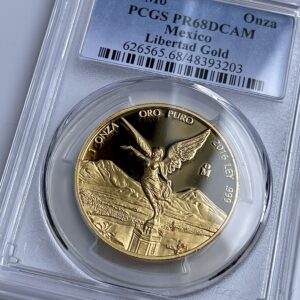
Mexico – 2016 – Libertad – Gold Coin 1 oz Proof – PCGS PR68 Deep Cameo
2.950,00 €plus shippingDelivery Time: approx. 2-3 days (excluding Saturdays, Sundays and public holidays) -
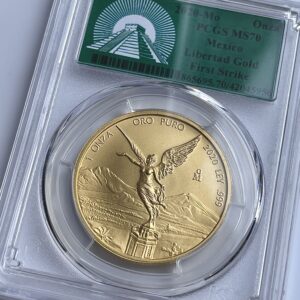
Mexico – 2020 – Libertad – Gold coin 1 oz – First Strike – PCGS MS70
3.150,00 €plus shippingDelivery Time: approx. 2-3 days (excluding Saturdays, Sundays and public holidays) -
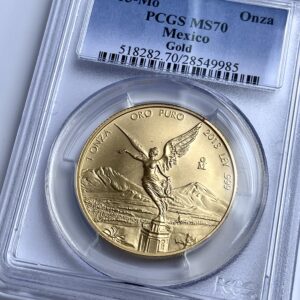
Mexico – 2013 – Libertad – Gold coin 1 oz – PCGS MS70
3.150,00 €plus shippingDelivery Time: approx. 2-3 days (excluding Saturdays, Sundays and public holidays) -
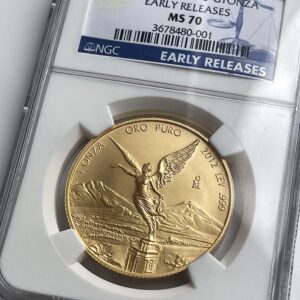
Mexico – 2012 – Libertad – Gold coin 1 oz – Early Releases – NGC MS70
3.150,00 €plus shippingDelivery Time: approx. 2-3 days (excluding Saturdays, Sundays and public holidays) -
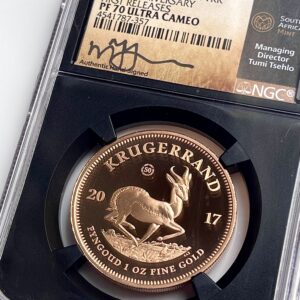
Krugerrand – 2017 – 50th Anniversary – 1oz Gold – First Releases – NGC PF70 UCAM
3.600,00 €plus shippingDelivery Time: approx. 2-3 days (excluding Saturdays, Sundays and public holidays) -
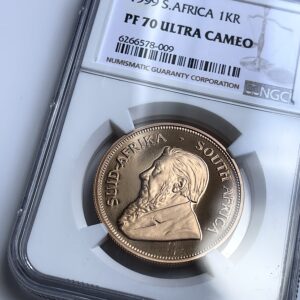
Krugerrand – 1999 – 1 oz Proof Gold Coin – NGC PF70 Ultra Cameo
3.750,00 €plus shippingDelivery Time: approx. 2-3 days (excluding Saturdays, Sundays and public holidays) -
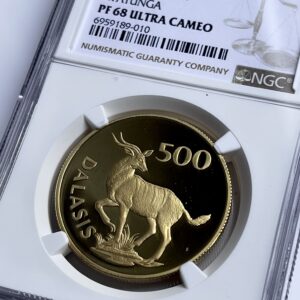
Gambia – 1977 – 500 Dalasis – Sitatunga – NGC PF68 Ultra Cameo
3.200,00 €plus shippingDelivery Time: approx. 2-3 days (excluding Saturdays, Sundays and public holidays) -
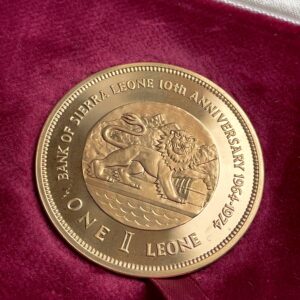
Sierra Leone – 1974 – One Leone – 10 years bank anniversary – original case
4.950,00 €plus shippingDelivery Time: approx. 2-3 days (excluding Saturdays, Sundays and public holidays) -
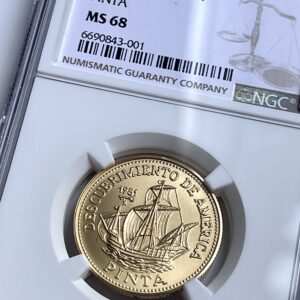
Cuba – 1981 – 100 Pesos – Pinta – NGC MS68
1.400,00 €plus shippingDelivery Time: approx. 2-3 days (excluding Saturdays, Sundays and public holidays) -
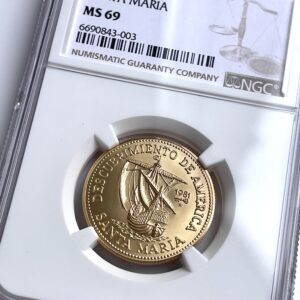
Cuba – 1981 – 100 Pesos – Santa Maria – NGC MS69
1.400,00 €plus shippingDelivery Time: approx. 2-3 days (excluding Saturdays, Sundays and public holidays)

